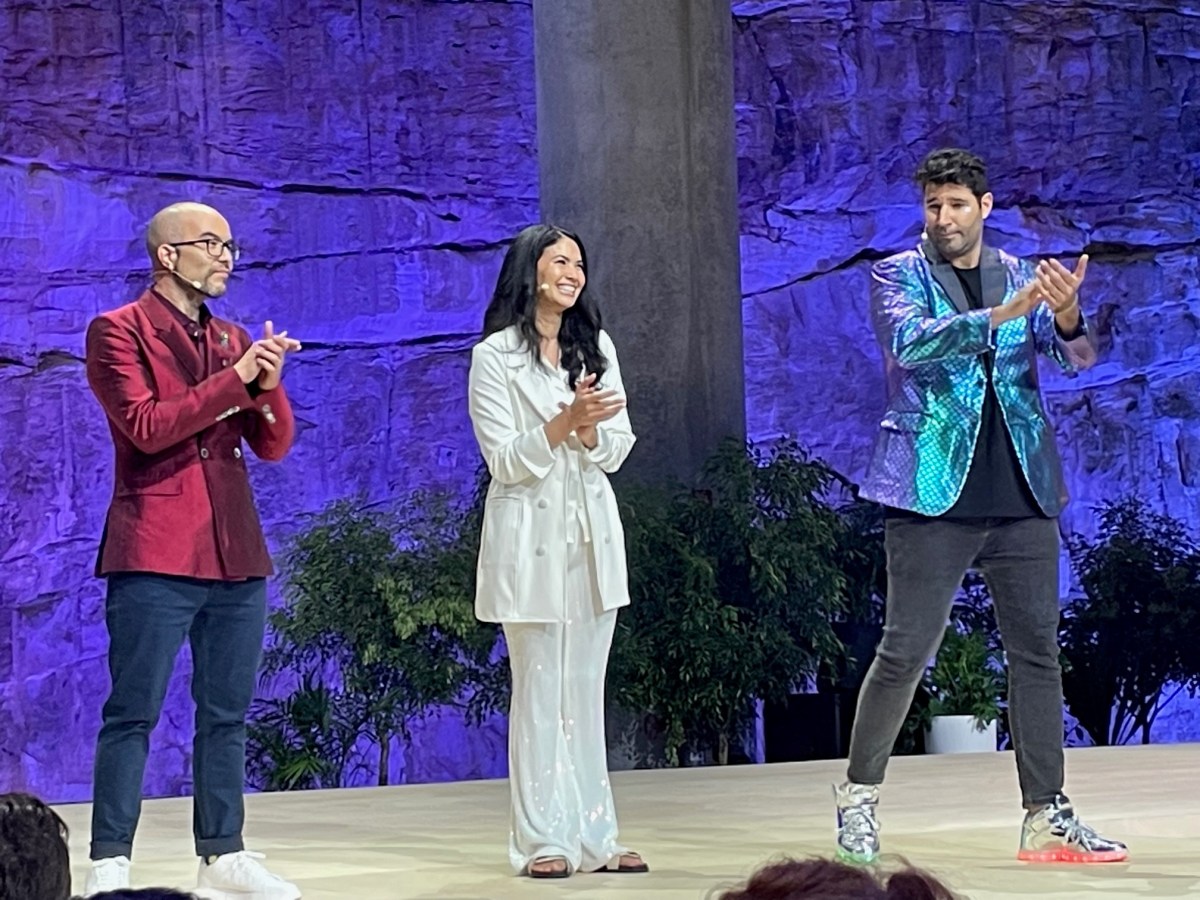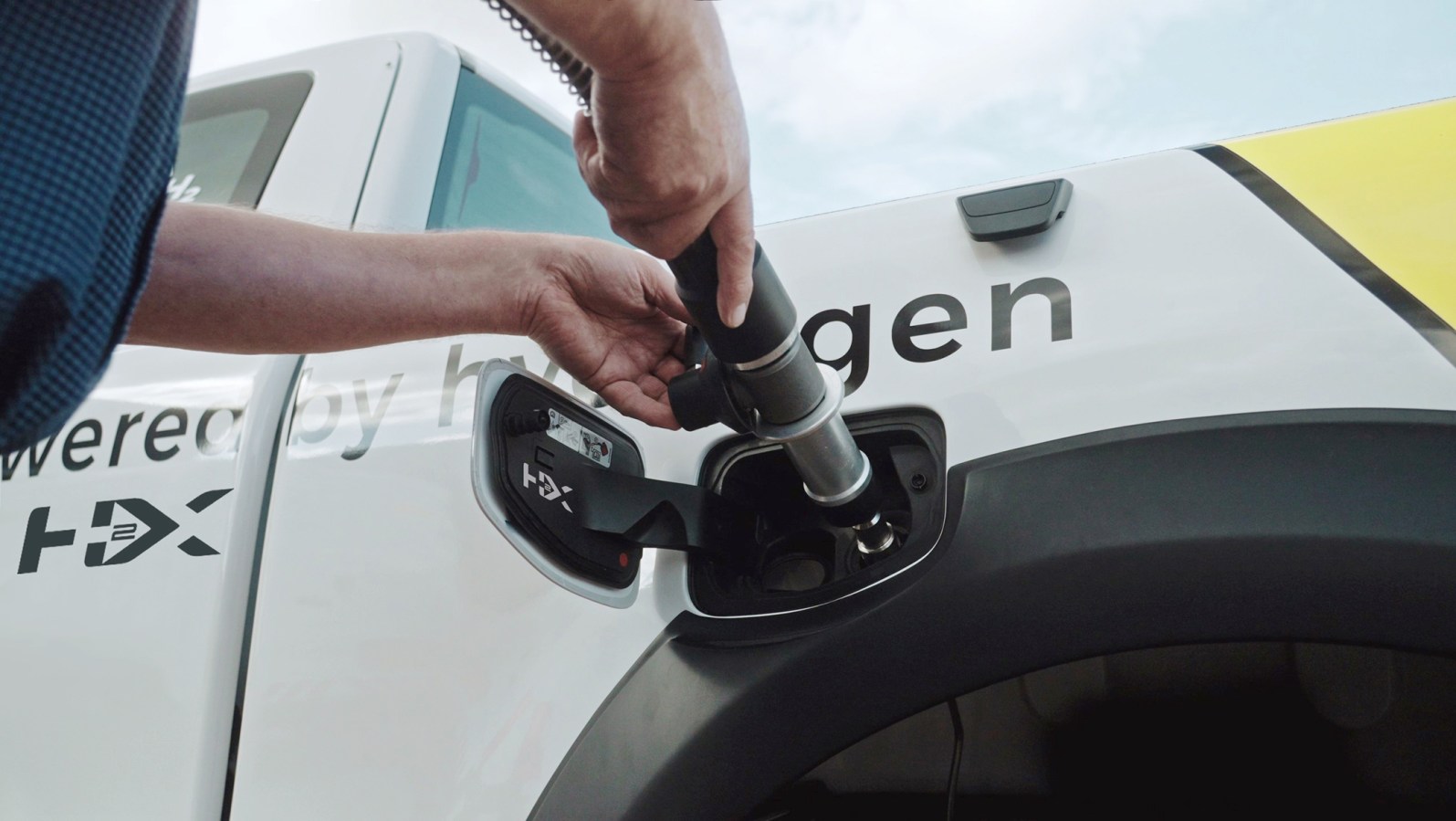Seven of 16 Cloud 100 newcomers are AI companies. More than half of Cloud 100 companies say they have launched a generative AI feature in the last eight months.

From left to right: Databricks cofounder Ali Ghodsi; Anthropic cofounders Dario and Daniela Amodei; OpenAI cofounder Sam Altman.
Timothy Archibald for Forbes; Anthropic; Andrew Caballero-Reynolds/AFP/Getty Images
Artificial intelligence is transforming cloud computing as we know it, as evidenced by Forbes’ latest Cloud 100 list of the sector’s best privately-held companies. This year, AI is everywhere: New No. 1 OpenAI and No. 2 Databricks are supplying tools to help companies build AI features. No. 3 Stripe, a fintech company, adopted the tech to combat fraud; No. 4 Canva embedded AI features into its design software; No. 7 Grammarly launched a writing assistant that uses AI to spit out paragraphs of text almost instantaneously.
“The feeling I get talking to customers is everyone feels like this is a technology of transformation targeted specifically at their industry,” Dario Amodei, CEO of list newcomer No. 73 Anthropic, told Forbes. “Except, it’s targeted specifically at every industry.”
San Francisco-based Anthropic, which makes a ChatGPT rival called Claude, is one of seven list newcomers growing rapidly thanks to the AI boom. Infrastructure providers like Databricks and No. 44 Dataiku are also benefiting. “AI is a bright spot” in the otherwise “subdued” tech sector, said Mary D’Onofrio, a partner at Bessemer Venture Partners, which works with Forbes to create the list (see here for a full breakdown of methodology).
Anthropic, which Amodei and six cofounders defected from OpenAI to start just two years ago, only began selling to business customers in February 2023. But the company told Forbes it already has “many hundreds of paying customers” on Claude for use cases spanning from legal document analysis to speech-based language translation. In May, the company said it had raised $450 million in funding led by venture capital firm Spark Capital, with contributions from Google and Salesforce. Per data provider PitchBook, its valuation hit $5 billion.
Anthropic and No. 85 Midjourney, the company behind the popular image generator, also represent the promise of a new wave of AI-native companies poised to remake the software landscape. Whereas the majority of this year’s Cloud 100 companies are at least 10 years old and employ 1,000-plus employees, these two startups were both founded in 2021 and have some 200 employees or less.
“My prediction is that two to five years from now, maybe half of the Cloud 100 list will be companies with 250 employees or less,” said Bessemer partner Elliott Robinson. Companies that once needed 100 employees to get to the Series B funding stage are now sometimes achieving the required growth momentum with 20 people or less, he said.
But Robinson was quick to note that he does not foresee this as a warning sign that AI is about to replace human jobs: “If you have 500 employees, the question is how can you make that 500 feel like 2,500?”
Related
In the last eight months alone, 55% of Cloud 100 companies report that they have launched generative AI features, according to Bessemer data. Some newcomers are finding success with AI-centric products, including No. 100 DeepL, which looks to take on ChatGPT and Google Translate. Stripe and Grammarly are among leading cloud companies that have integrated OpenAI’s models into their existing products.
And No. 35 Notion used Anthropic’s models to help build its AI-powered productivity and writing assistant. The company now categorizes the AI product as its own business line and says it has bolstered the overall revenue growth rate, according to cofounder Akshay Kothari.
“This year, there has been a complete revolution in awareness,” said Ali Ghodsi, cofounder and CEO of Databricks, which makes software for companies to store and analyze their data. The company announced in June that it brought in more than $1 billion in revenue for its fiscal year that ended in January, and Ghodsi said interest has only picked up since then. Ghodsi said he’s never spoken to as many CEOs of large enterprise companies as in 2023. He credits their children for using ChatGPT at home: “AI went from being abstract to becoming concrete.”
It’s a remarkable turn for the viral chatbot which was the subject of intense debate at OpenAI last year. CEO Sam Altman told Forbes in January that he had to push hard for the launch as some employees were unimpressed by its capabilities and unsure whether it was worth releasing at all. ChatGPT and its successor GPT-4 are chiefly responsible for OpenAI’s first place ranking, which is by far the highest debut in Cloud 100’s eight-year history. (OpenAI did respond to requests for comment).
No. 98 Hugging Face, another AI newcomer to the list, is experiencing similar tailwinds. Forbes reported last month that it is receiving new investor interest at a $4 billion valuation after tripling its revenue run rate from the start of the year. Cofounder and CEO Clément Delangue declined comment on those numbers, but said that usage of his company’s service — which allows businesses to store, share and collaborate on AI models and datasets — has grown tenfold over the past year.
“Before, [users] were more tech-focused companies,” Delangue told Forbes. “Now, it’s everyone.” Both large enterprises and small businesses are learning to use Hugging Face, he said: for instance, one bookstore owner in Spain used the AI tool to build an automated book classification system. “It’s not crazy anymore to think that in five years most of the cloud spend will be related to AI,” he said.
But the question remains about where monetary value will accrue through AI in the long term.
“Many customers we are talking to are considering prototyping with [OpenAI’s] GPT-4, but using a commercial model or an open-source model they can control” to build the actual product, said Florian Douetteau, cofounder and CEO of Dataiku, which rose 33 spots on this year’s ranking. GPT-4 is the gold standard for prototyping a potential product because its overall technical abilities are currently the most advanced.
That’s the approach No. 23 Gong is taking, its cofounder and CEO Amit Bendov told Forbes. The startup, which records salespeople’s calls and uses AI to analyze the conversations to surface key points, has added more than 1,000 new customers since the start of the year, which Bendov attributes to newfound appetite for AI. “We usually prototype quickly with OpenAI to see what actually creates value for people,” he said. “Once they start saying they like [an AI feature] but it’s not accurate enough, then we develop our own model.”
Databricks bet on lasting demand for these smaller, bespoke models by acquiring MosaicML, a startup which makes it easier for businesses to build such models, for $1.3 billion in June. MosaicML’s annual recurring revenue had grown from $1 million in January to $20 million by June, Ghodsi said, describing it as a sign of growing interest in this approach.
While more challenging to build compared to simply plugging in an existing large language model, models that are tailored to a customer’s specific use case offer benefits such as privacy, customization and potential cost savings. On the other hand, large language model providers are backed by so much money — most of all OpenAI, which reportedly received a $10 billion investment from Microsoft in January — that their future models could prove attractive simply by virtue of having the money necessary to evolve more quickly.
The jury is still out, so Amodei is attempting to play both sides. Anthropic is partnering with a few large customers to create customized versions of Claude. “If we sit down in a room and really work together for a few weeks to help shape a model to [the customers’] needs, that turns out to have a large amount of benefit,” he said.
With the release of Claude 2.0, its latest version of its flagship model, Anthropic also launched a chatbot for consumers, which it currently offers for free (though he said this may change in the future). Amodei said he doesn’t know which route will prove most lucrative: “At this stage, we’re just offering different things and seeing how broadly useful they are.”
Amodei is certain, however, that the effects of AI on the cloud will only compound from here. He cautioned that the old playbook of purchasing cloud software — buying a subset of products and, if satisfactory, increasing adoption over time — could leave enterprises behind in the AI age.
“I think the most important thing to understand is the pace of progress of the technology,” he said. “In contrast to traditional software, where it’s okay to scope it out and see what it can do, here it pays to be ambitious and build for where the technology will be in six months.”
This article was first published on forbes.com and all figures are in USD.





